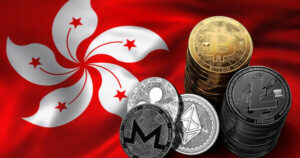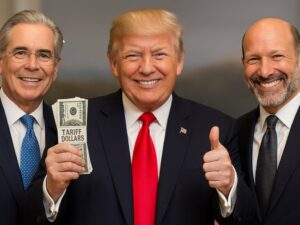The US indices rose steadily on Thursday. The S&P 500 (US500) and Dow Jones (US30) indices rose to new record highs, while the NASDAQ (US100) rose to a 2-month high. At the end of the day, the S&P 500 Index (US500) was up 1.7%, the Dow Jones (US30) added 1.26%, and the NASDAQ Technology Index (US100) jumped 2.51%.
The Fed’s 50 bps rate cut and estimates of another 50 bps rate cut this year reinforced speculation that the Fed will provide a “soft landing” and boosted risk sentiment in asset markets. Stocks maintained gains on Thursday despite higher bond yields after weekly US jobless claims fell more than expected to a four-month low, a hawkish factor for Fed policy. US weekly jobless claims fell by 12,000 to a 4-month low of 219,000, indicating a stronger labor market than expectations of 230,000. Markets rate the odds of a 25bp rate cut at the November 6–7 FOMC meeting at 100% and a 50bp rate cut at this meeting at 44%.
Equity markets in Europe were mostly up yesterday. Germany’s DAX (DE40) rose by 1.55%, France’s CAC 40 (FR40) closed 2.29% higher, Spain’s IBEX 35 (ES35) gained 0.80%, and the UK’s FTSE 100 (UK100) closed up 0.91%.
Producer prices in Germany fell 0.8% y/y in August 2024, the same pace as the previous month and better than market projections, which expected a 1.0% drop. This was the 14th consecutive month of producer price deflation and the lowest in the sequence. UK retail sales in August 2024 were up 1% on the previous month, following an upwardly revised rise of 0.7% in July and well above prognoses of 0.4%. On a year-over-year basis, retail sales rose by 2.5%, the highest since February 2022.
The Bank of Norway left its key rate unchanged at a sixteen-year high of 4.5% at its sixth consecutive meeting in September 2024 in line with market expectations and noted that it is likely to keep the interest rate unchanged until the end of the year. The bank noted that the higher interest rate helped cool the Norwegian economy as growth remained subdued and unemployment rose from a lower level.
WTI crude oil prices rose above $71.5 a barrel on Thursday, extending their recovery from a 15-month low of $65 reached on September 10, amid expectations of higher global energy demand and rising risk premiums caused by rising tensions in the Middle East. There were reports that Hezbollah radios exploded in southern Lebanon late Wednesday night after similar pager blasts a day earlier, heightening fears of military action in the region and Iran’s involvement in the conflict. Israel’s defense minister warned that the country has entered a new phase of war against its neighbors.
Asian markets were predominantly rising yesterday. Japan’s Nikkei 225 (JP225) rose by 2.13%, China’s FTSE China A50 (CHA50) gained 0.42%, Hong Kong’s Hang Seng (HK50) added 2.00%, and Australia’s ASX 200 (AU200) gained 0.61%.
The offshore yuan strengthened to 7.05 per dollar, remaining at its highest level since May 2023 and posting gains for the third consecutive session. The surge followed the Chinese Central Bank’s decision to keep key lending rates unchanged during September, which was in line with market expectations. The one-year prime rate (LPR), the benchmark for most corporate and home loans, remained unchanged at 3.35%, while the five-year rate, the benchmark for real estate mortgages, remained unchanged at 3.85%. Both rates remain at record lows after unexpectedly falling in July.
The Bank of Japan (BoJ) unanimously kept its key short-term interest rate at around 0.25% during its September meeting, leaving it at its highest level since 2008, in line with market consensus. Friday’s decision underscored that the Central Bank is in no rush to raise rates further after raising them twice this year, in March and July. The board also said more time was needed to monitor financial markets amid hawkish views from some members.








